17-19/3/2018. This was the place, Chak Chak, where the Zoroastrians still come to do their annual pilgrimage. Zoroastrianism is an ancient Persian religion that may have originated as early as 4,000 years ago and was the state religion of three Persian dynasties. It was tucked into the mountain, and surrounded by peaks that rose in the remote desert. The guide told me there are still more than 10,000 members of this population in the Yazd area. Most of the original Persians had since converted to Islam.
17-19/3/2018 下一站到这古波斯拜火教徒人每年朝圣的地方查查克(Chak Chak)。结构都镶在山体,四周是如烤干的沙漠和山脉。这族在亚兹德当地还有万多人,在伊朗当然大多已畈依回教。
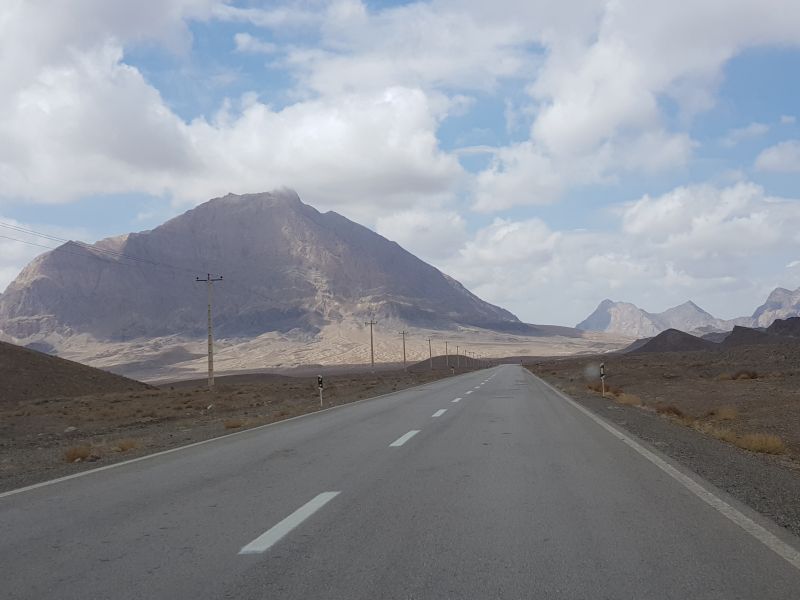
Approaching Chak Chak 驶近查查克朝圣地 
View from Chak Chak 查查克四周景观 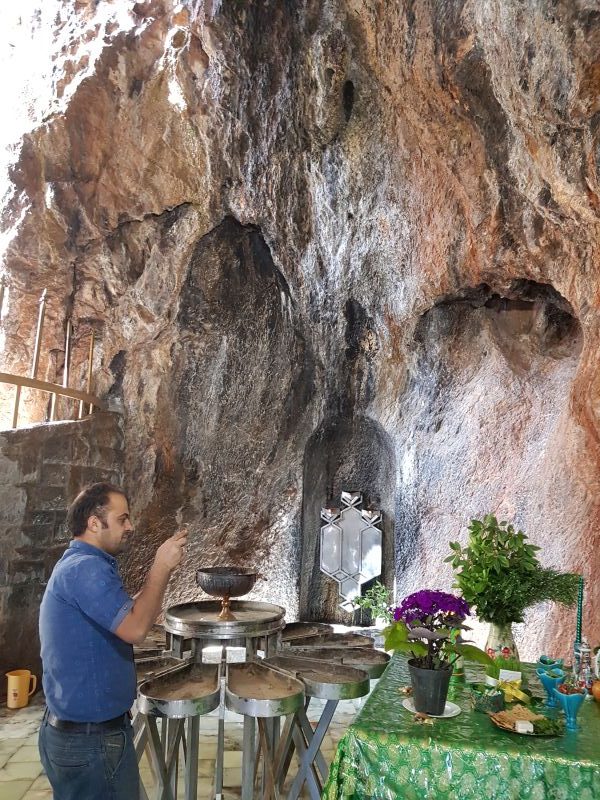
Cave in Chak Chak 查查克朝圣山洞 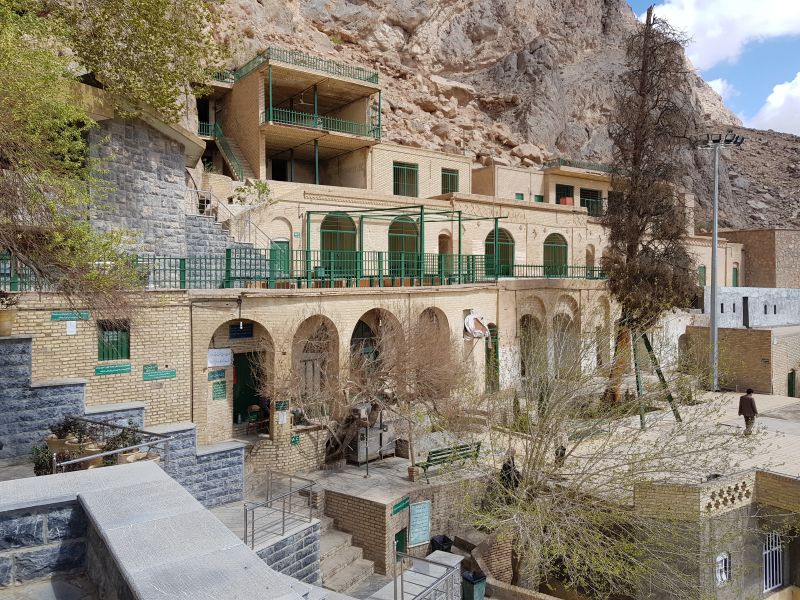
Structures built into the mountains 镶入山体的结构
Next on this day trip came Narin Castle in the Meybod district. It looked like a sandcastle on the beach that had been partially washed away. The oldest part of this ruin dates back more than 2,000 years; even the newest additions are a few hundred years old. It looked to be gradually melting away under the unrelenting sun. The ravages of time are truly unforgiving.
这纳因土城堡 (Narin Castle) 遗迹在梅博德(Meybod)地区,最老部分已两千多年,最近期扩建部分也有几百年,都是泥沙堆积起来,像个巨型沙雕,部分如给水冲蚀,又好像渐渐在炎阳下融化。岁月无情呀。

Narin Castle 走向Narin 城堡 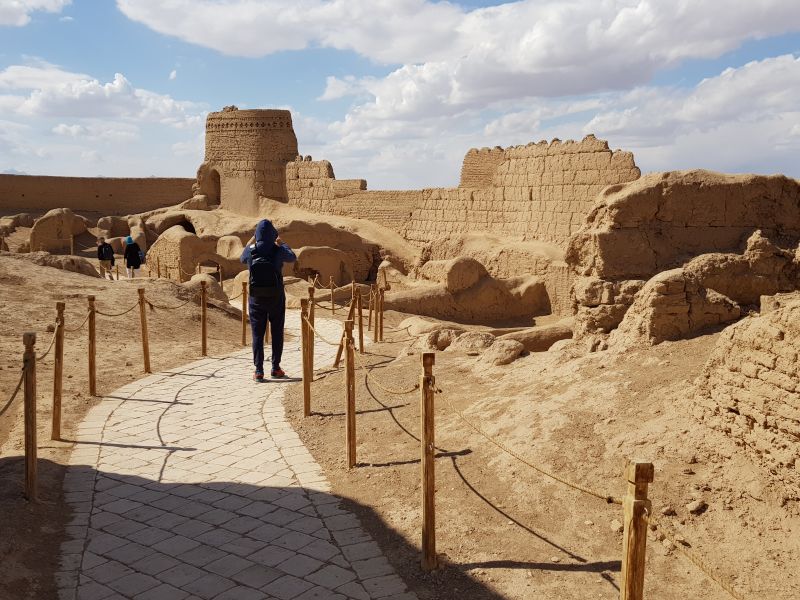
Inside Narin Castle 在Narin城堡内 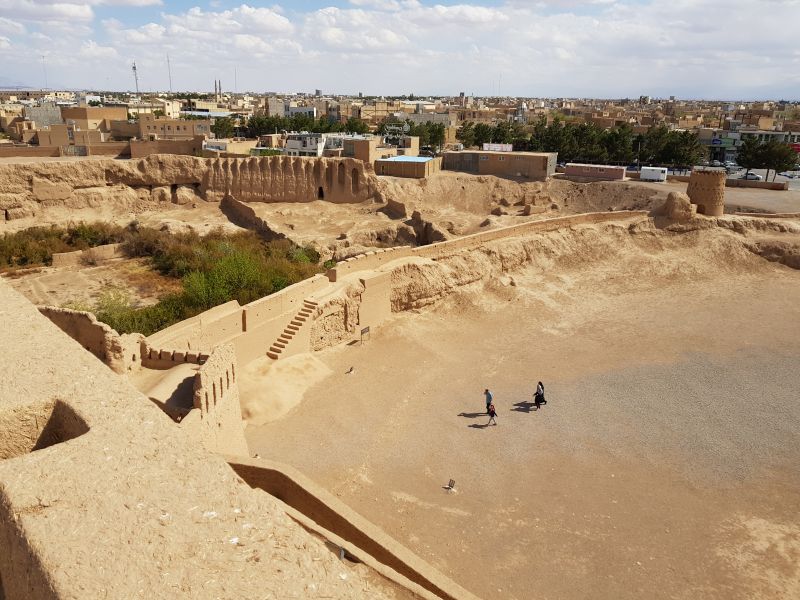
Narin Castle seriously eroded 受严重侵蚀的城堡 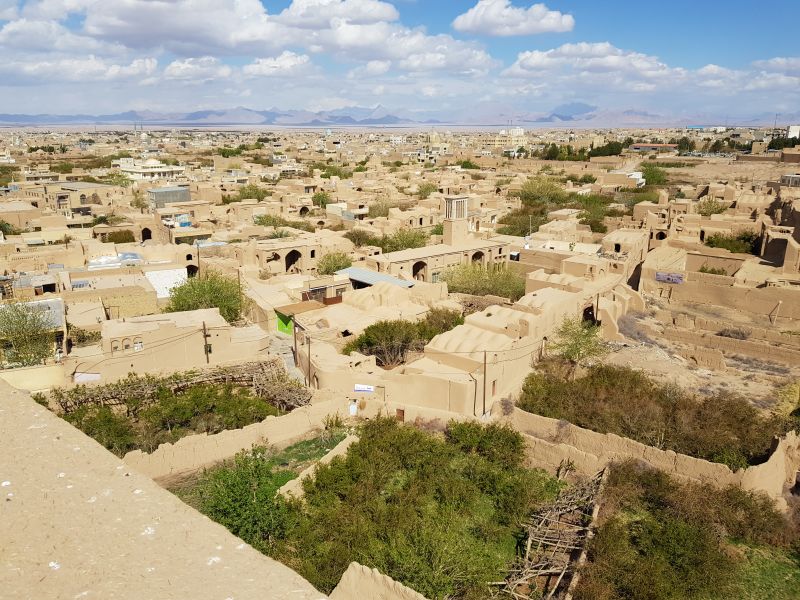
View from the top of Narin Castle 城堡四周景观
We then came to another caravansary, which in old times served as a refuge and a sanctuary for traders traversing the harsh desert, providing them with accommodation and protection. It also served as the refueling station for all visitors, the camels and their masters, as water directed from the surrounding mountains was stored in the underground reservoir here.
They made do with what they had. The desert is still as dry as ever. They still make do with what they have.
又是另一栋古客栈,古时给路过商人提供住宿和保护。地下水库将水从高山处引过来供饮用。
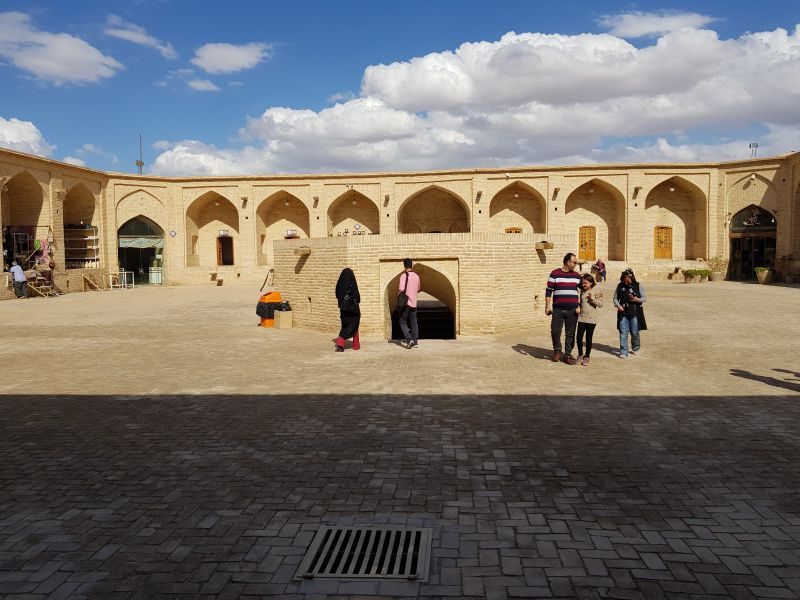
Caravanserai 古时商队客栈 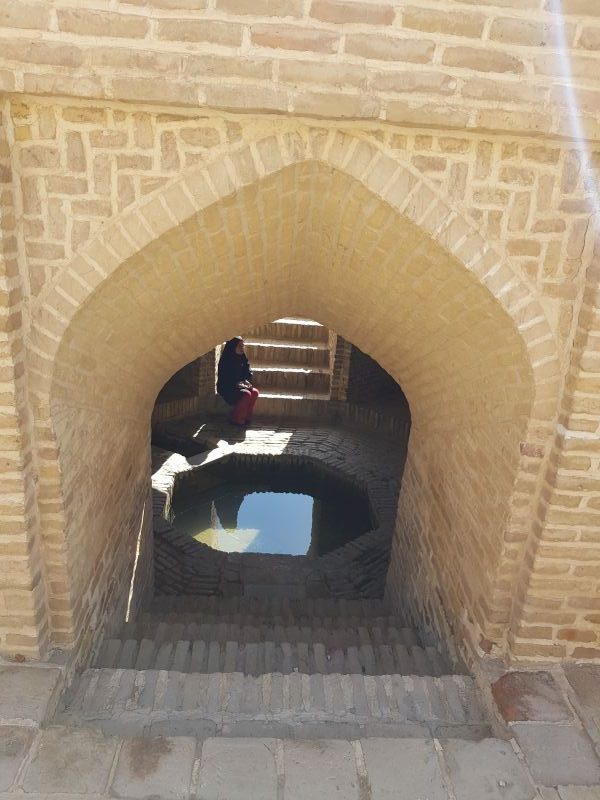
Well to underground water reservoir 地下水的井口
This was an ice house of ancient times. Ice was stored here in winter for summer. The ground was a deep dugout with a pointy ceiling above. Hay insulated the layers of ice blocks to keep them from melting. They already knew how to chill back then.
这是古时的冰房 (ice house),把冬天的冰块在这里储存到夏天使用。地板挖成深凹的坑,天花板如尖高的三角帽,层层的大冰块以干草隔热。千百年前,大热天下在这不饶人的沙漠和无情的干土灌下几瓶冰的是多么凉爽。 从这大冰房到今天的小冰箱,人类还真行。
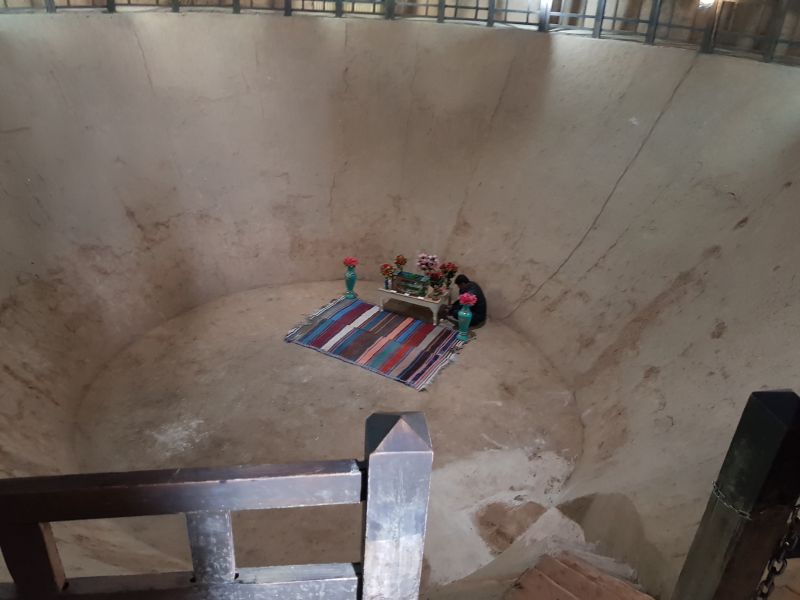
The deep dugout floor of the ancient ice house 古冰房深凹的地板 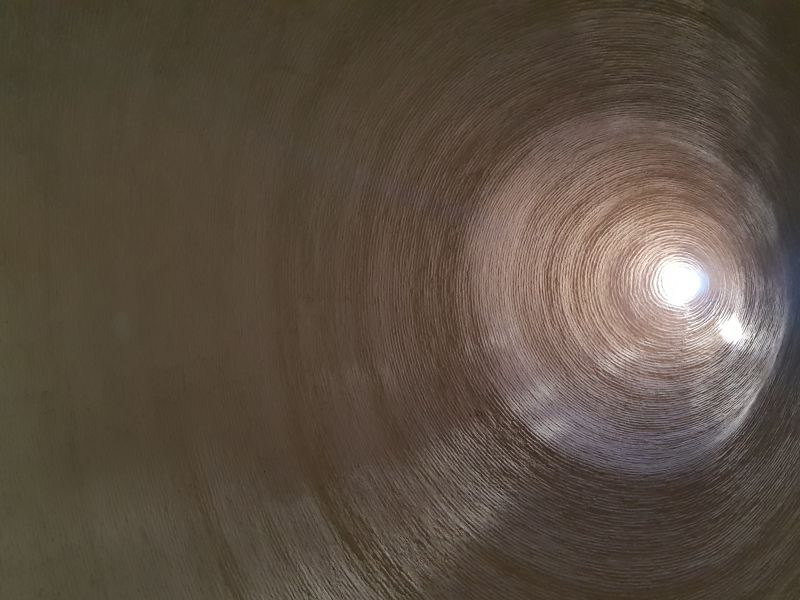
Pointy ceiling of the ancient ice house 古冰房的高尖天花板
We had been driving since 9 a.m. Now, late in the afternoon, before the sun set, we made another dash, to the burial place of the Zoroastrians. They buried their dead high on the hill. A big hole was dug into the ground, where the dead body was laid, facing the open sky. Birds then came and helped themselves to the body. This practice was now discontinued, regarded by the authorities as unhygienic. The Pole traveling in the same car asked his beautiful wife to lie in the hole so he could take a photo. He was amused; his wife was not.
跟六个波兰人分两车从早上九点往亚兹德周边景点出发,每人付了司机导游大约十美金,马不停蹄乘太阳没完全下山前到古波斯人葬死人的地方。他们在高高的山丘上挖了个面向天空的大洞以摆放尸体,尸体由空中飞鸟消化完事,不需入土。这葬礼现已被淘汰,因政府认为不符卫生。我同车的波兰人劝他漂亮的太太到那大洞里去躺着好让他拍张照。拿太太开这样的玩笑是活得不耐烦了。
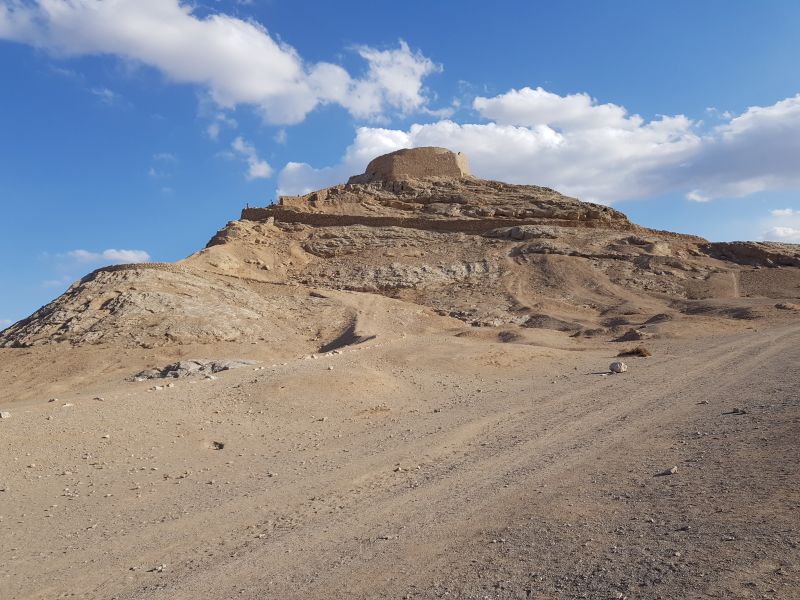
The high ground Zoroastrians used to dispose off the dead 山丘上古波斯人处理死尸的葬身地 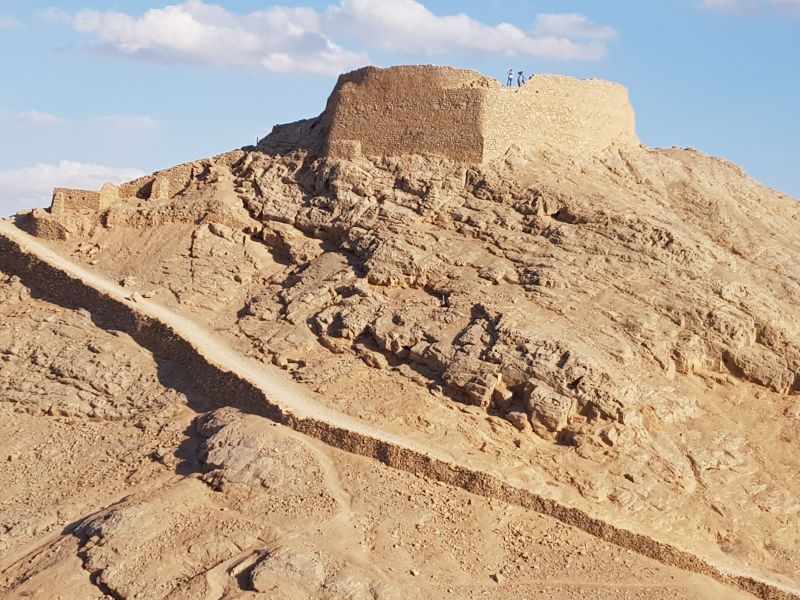
The ‘burial’ place of the ancient Zoroastrians 古波斯人‘葬身’之地 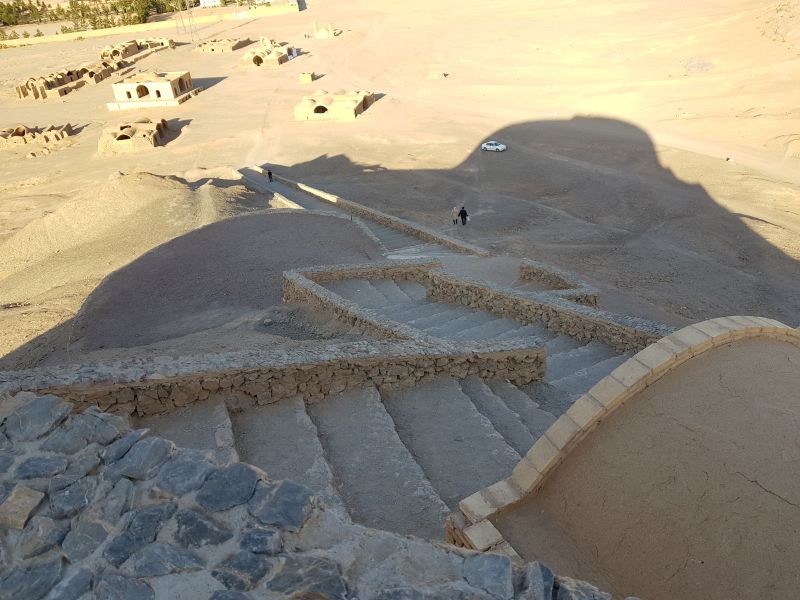
Stairs leading to the ‘burial’ altar 往山丘上葬尸坛的爬梯 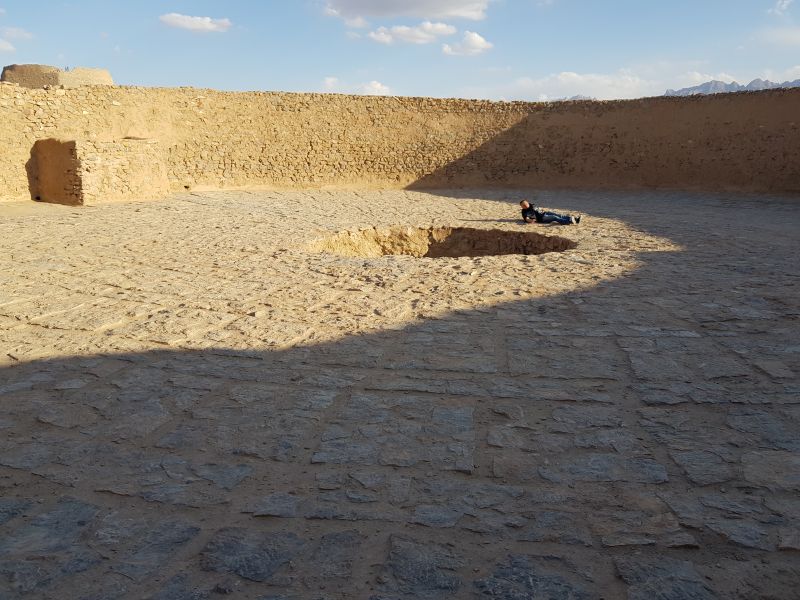
The ‘burial’ pit facing the sky 尸体安置在面对天空的大坑 
A big pit to lay the corpse in 摆放死尸的大坑
The last stop of this frantic day was the Fire Temple, the place of worship for the Zoroastrian people. The sacred fire is said to have been burning for hundreds of years. To see this ancient minority faith still being practiced in this religious land, to see them keeping this fire burning in their hearts, is remarkable.
Yazd to me was the most special in Iran, with its old Persian culture, the relics, the desert characteristics, the pervasive religious influence. It was like being transported back in time, old Persian time. The past of Yazd was so much in the present. I embraced modernity, but I didn’t want to let go of the past. I love Yazd.
这疯狂的一天最后一站就到这火庙(Fire Temple) 去看看。火庙是古波斯人的信仰的庙宇,这把火听说已燃烧了几百年。
我认为亚兹德是最有特色的伊朗城市中。古波斯文化,留下的遗迹,沙漠小城,无处不在的宗教影响,恍如时光倒流回到古伊朗。
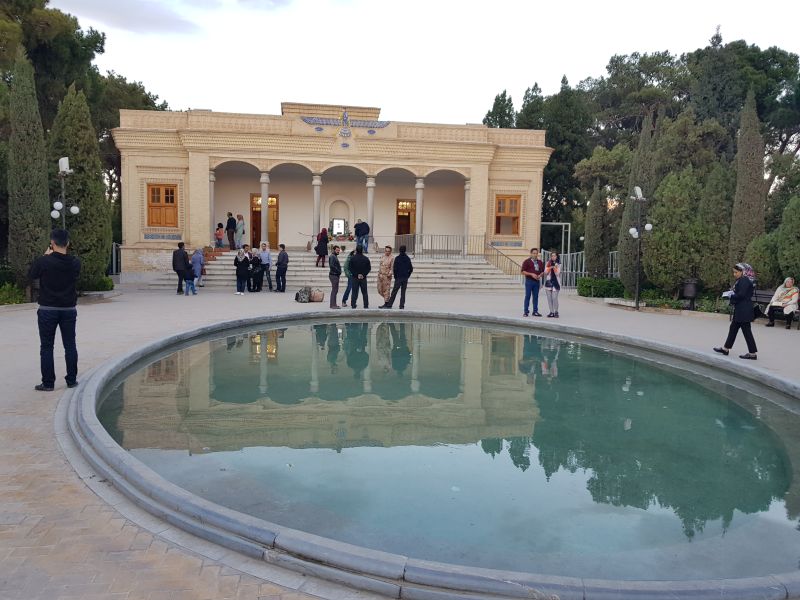
The Fire Temple 火焰神庙 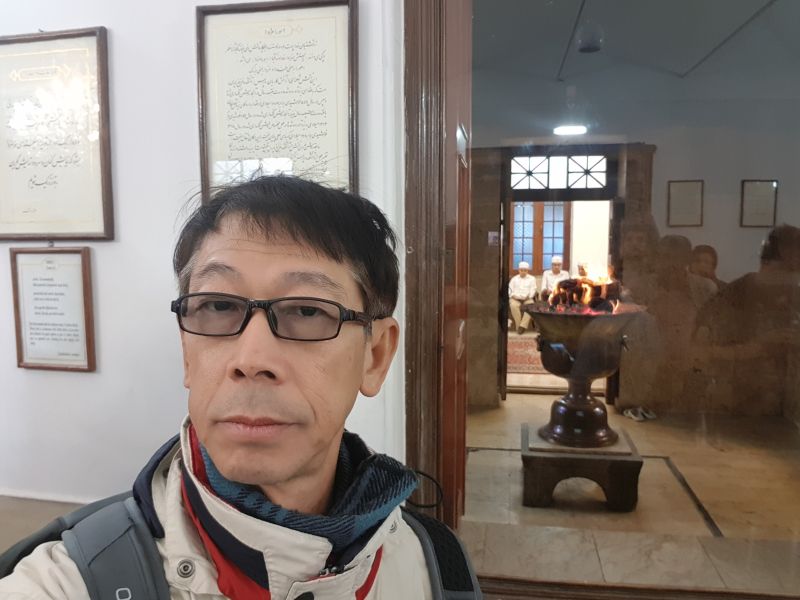
The fire that has been burning for hundreds of years 火焰神庙里燃烧了数百年的火焰 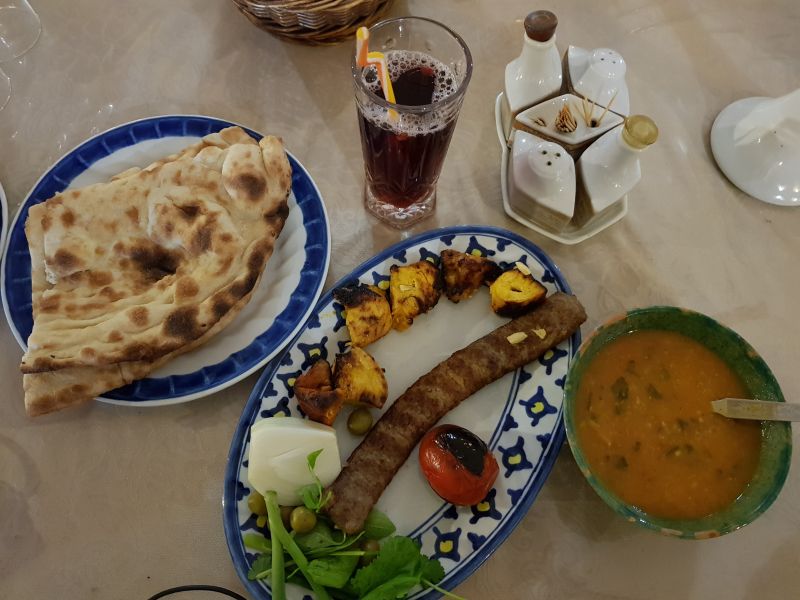
Yadz dinner – kebab and bread 亚兹德晚餐-肉串和烤面包 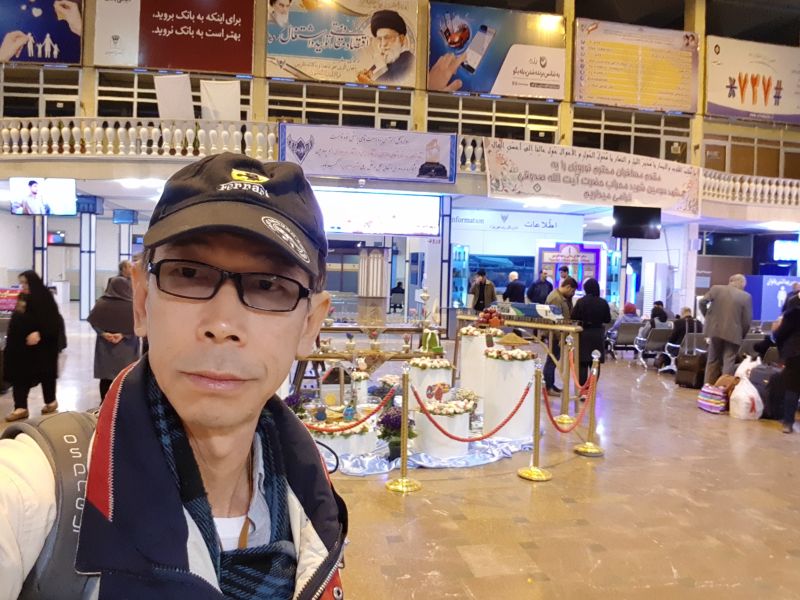
Yadz train station 亚兹德火车站 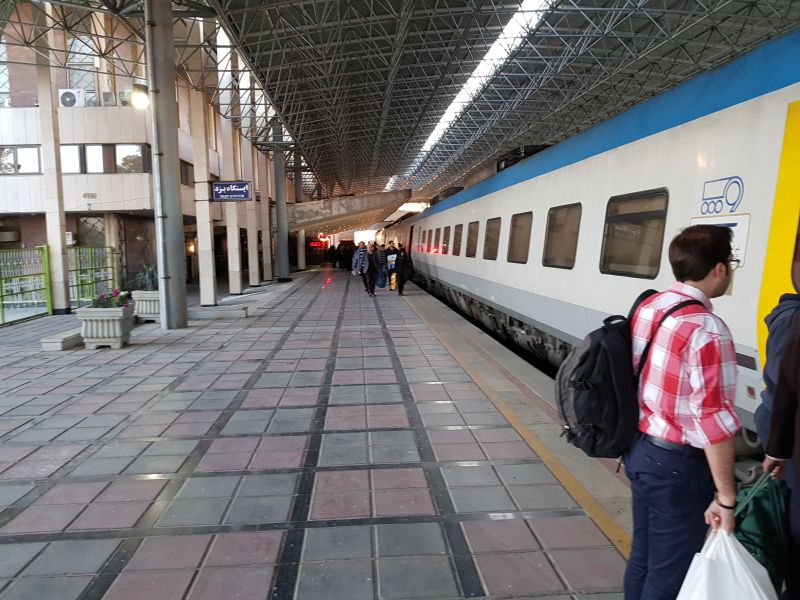
Train departing Yazd and Iran 离开亚兹德和伊朗火车